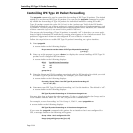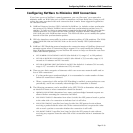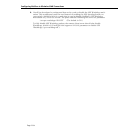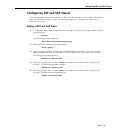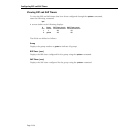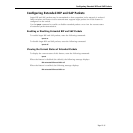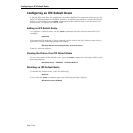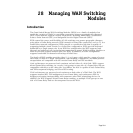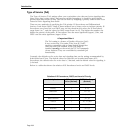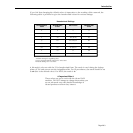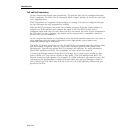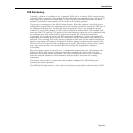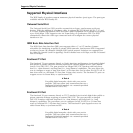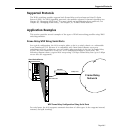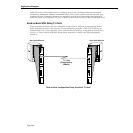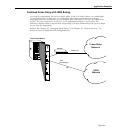
Introduction
Page 28-2
Type of Service (ToS)
The Type of Service (ToS) settings allow you to prioritize voice data and voice signaling data.
Since voice data is time critical, and requires steady throughput, it should be given higher
priority than other forms of data. This can be done by assigning a priority value for the Voice
Data and Voice Signaling Data fields.
There are two methods of specifying the ToS priority: IP Precedence and Differentiated
Services Code Point (DSCP). Both of these methods use a binary value to indicate priority. IP
Precedence uses three bits, and DSCP uses six bits; therefore the values for IP Precedence
range from 0 to 7, and the values for DSCP range from 0 to 63. The higher the number, the
higher the priority of the traffic. IP Precedence uses the most significant (upper) 3 bits, and
DSCP uses the most significant (upper) 6 bits.
♦ Important Note ♦
The ToS setting is a feature of Quality of Service (QoS).
It was set into the UI to make Voice over IP (VoIP)
modules compatible with an Omni Switch/Router that
does not have QoS installed. If the QoS image is
installed (
qos.img) on the switch, the UI ToS commands
do not function. They are overridden by standard QoS
functionality.
Currently, the defaults set for voice data and signaling data are the setting recommended by
both Alcatel and Cisco. The default values for switches use hexadecimal forms of IP
Precedence; the default value for voice data is 5 decimal, and the default value for signaling is
3 decimal.
Below is a table that shows the relation of IP Precedence levels and DSCP levels.
Relation of IP Precedence, DSCP, and Level of Priority
Priority Level IP Precedence
Value (Decimal)
DSCP Value Range
(Decimal)
Routine 0 0 - 7
Priority 1 8 - 15
Immediate 2 16 - 23
Flash 3 24 - 31 (AF31)
Flash-Override 4 32 - 39
Critical 5 40 - 47 (EF)
Internet 6 48 - 55
Network 7 56 - 63



